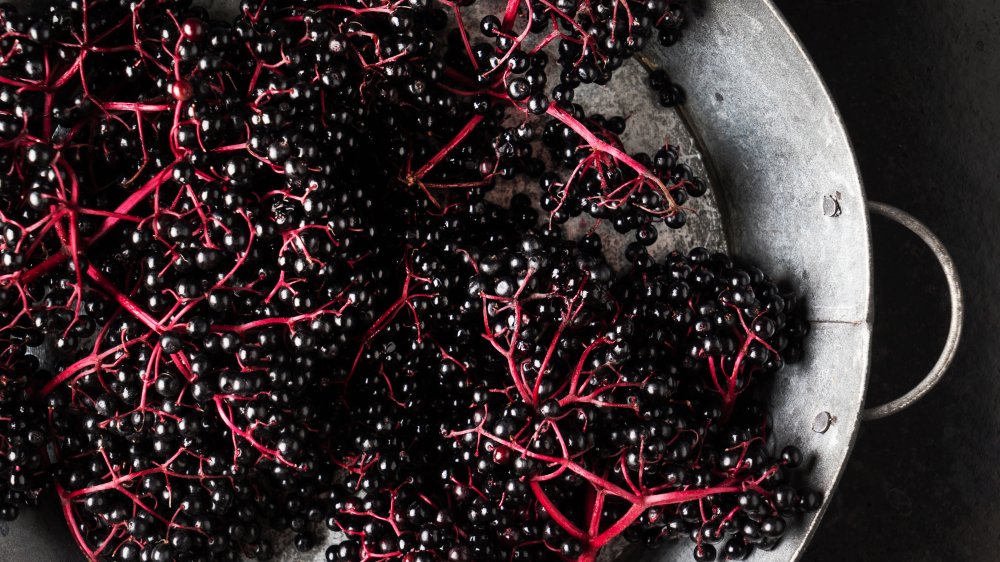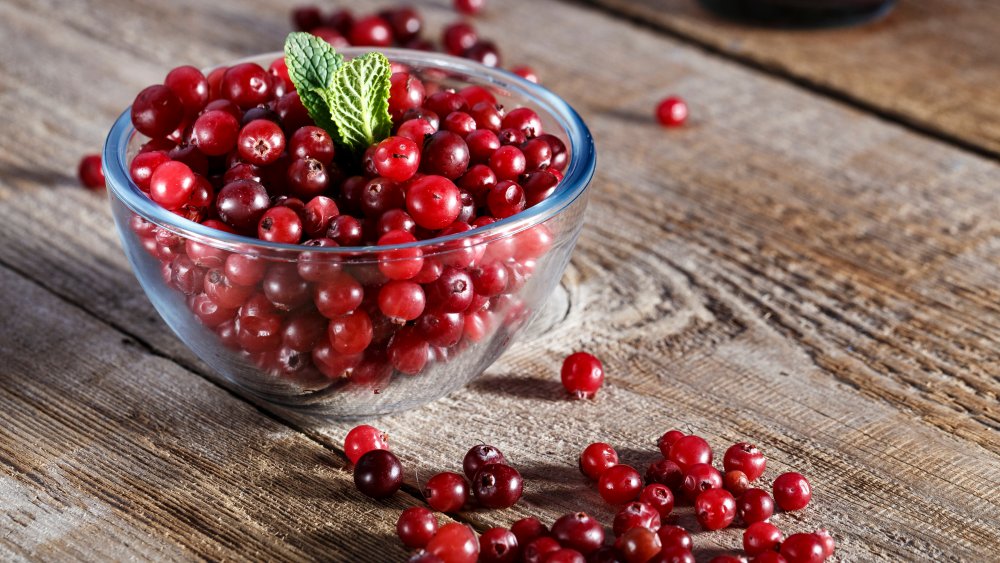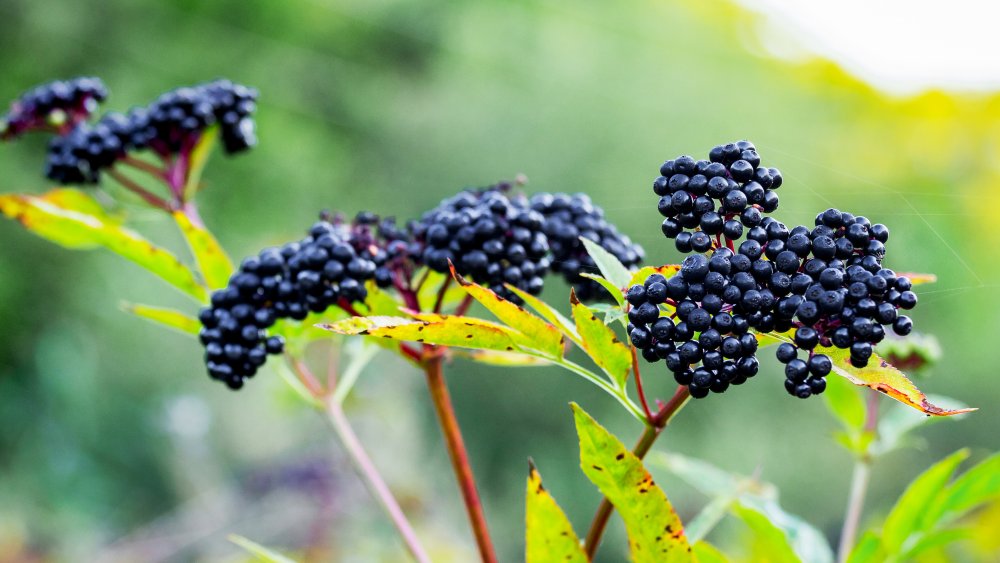Here's What You Can Substitute For Elderberry
Berries are some of our favorite fruits, whether eaten raw, baked into desserts, swirled into ice cream, or served over Greek yogurt. But what can you do when you run out of deep purple elderberries and need a substitution?
Elderberries are a fruit that's native to Europe, Asia, and Africa, but these days you can find it growing all over the U.S., and also in Canada. The shrub they grow own produces fragrant flowers in the spring, which turn into berries that ripen to a dark purple, black, or deep blue color in the fall (via Food Facts).
What to substitute for elderberry
Elderberries have a tart taste, and are usually cooked with plenty of sugar and turned into jams and preserves, or made into juices and wines (via Healthline).
The ideal substitute for elderberries is other tart berries that are usually cooked with sweeteners, like black currants or cranberries (via Food Subs). Lingonberries, if available, can also be used, but in the U.S., you'll most easily be able to find cranberries (via Gourmet Sleuth).
In recipes that call for elderberry juice, you can substitute blackberry or blueberry juice instead, but you may need to reduce the amount of sugar called for in the recipe depending on the sweetness of the juices (via Midwest Elderberry Cooperative).
Are elderberries poisonous?
If you have an elderberry tree or bush on your property, then you're lucky, because both the flowers and the berries are edible — once ripe, that is.
Unripe elderberries are toxic, and you should only pick those that have ripened to a deep purple, blue, or black. Then, you need to cook the berries thoroughly, because they contain a glycoside, which can cause a build-up of cyanide in the body, which is poisonous (via Norm's Farms). That's why most recipes you'll find that include elderberries are cooked.
You also need to be careful to not include any stems or leaves in your cooking, because those are poisonous as well. If you're using elderberry blossoms to make a syrup or liqueur, make sure you remove the blossoms from the stems.


